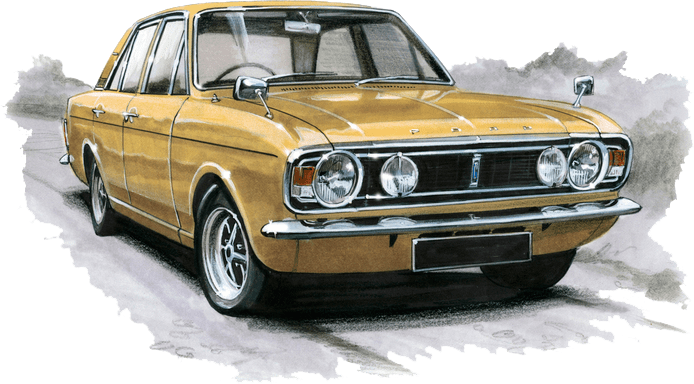
The Ford Cortina is a classic car that holds a special place in automotive history. Produced by Ford UK from 1962 to 1982, the Cortina quickly became one of the most popular models in the UK and beyond. Through its various generations, the Cortina underwent several technological advancements, elevating it to new levels of performance, safety, and comfort. In this article, we will explore some of the key technological features introduced in later models of the Ford Cortina.
1. Improved Suspension:
As the Cortina evolved over time, Ford engineers aimed to enhance its driving dynamics and ensure a smoother ride. In later models, improved suspension systems were introduced, such as the double wishbone front suspension and leaf spring rear suspension. These advancements allowed for better handling, increased stability, and superior road contact, resulting in an overall improved driving experience.
2. Safety Features:
With an increasing emphasis on passenger safety in the automotive industry, Ford incorporated several safety features into later generations of the Cortina. One significant advancement was the inclusion of front disc brakes, replacing the previous drum brakes. This braking technology greatly improved stopping power and reduced the risk of brake fade. Additionally, seat belt anchorage points were added to improve occupant protection, providing drivers and passengers with a safer journey.
3. Fuel Efficiency:
As concerns for fuel economy and emissions grew in the 1970s, manufacturers began to focus on developing more efficient cars. Ford responded to this trend by introducing various fuel-saving technologies in later Cortina models. These advancements included the introduction of electronic ignition systems and the adoption of lean-burn engines. These changes contributed to improved fuel efficiency, reducing the car’s environmental impact and providing owners with cost savings at the pump.
4. Electrics and Electronics:
The later models of the Ford Cortina saw the integration of advanced electrical and electronic systems, revolutionizing the driving experience. One notable introduction was the electric fuel pump, providing better fuel delivery and more reliable performance. Furthermore, advancements in dashboard instrumentation and electronic controls, such as the introduction of electronic ignition and electronic fuel injection, improved reliability and vehicle diagnostics.
5. Upgraded Interior:
To enhance comfort and convenience, later models of the Cortina featured upgraded interior features. This included improved heating and ventilation systems, allowing occupants to easily regulate in-car temperature. Additionally, innovations like electric windows, power steering, and improved seating materials were introduced, elevating the overall comfort and luxury of the Cortina.
In conclusion, as the Ford Cortina evolved over its production run, it underwent various technological advancements that improved its performance, safety, and comfort. From enhanced suspension systems to improved fuel efficiency and upgraded interior features, the later models of the Cortina became more refined and technologically advanced. Today, the Ford Cortina remains a classic car that represents an era of automotive innovation and engineering excellence.